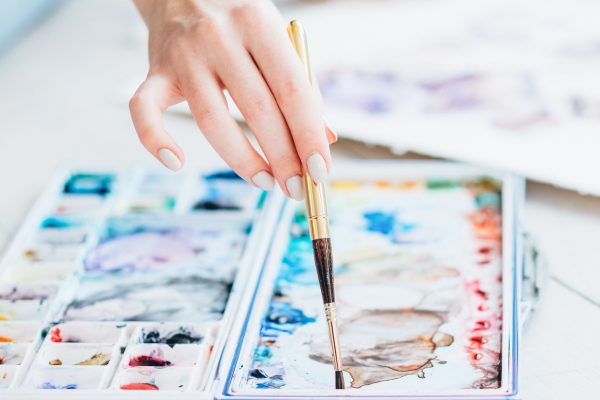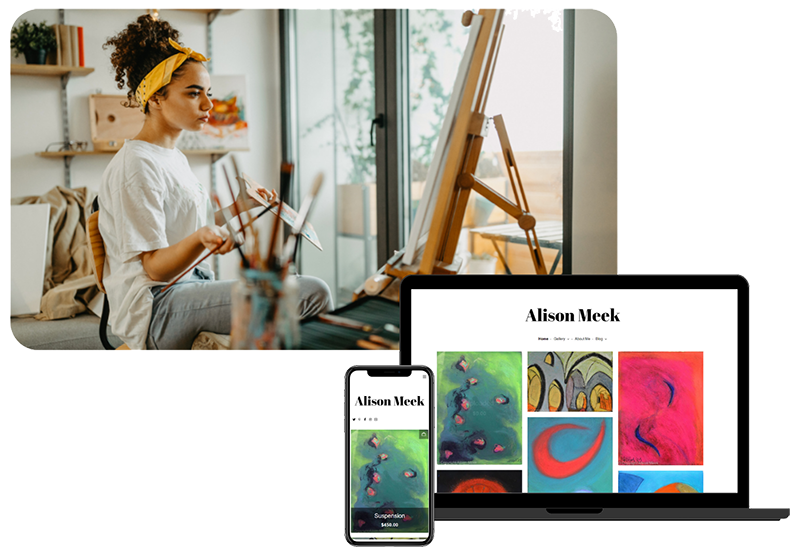It’s easy to become overwhelmed by all of the technical information out there about painting, or for that matter, to presume that painting is a ‘free for all’ world. However, there are still some basic things that it is helpful to know – such as those below.

First of all… what type of paints should you use?
If you are a newcomer to fine art painting, it is likely that you will be choosing between oils, acrylics and watercolours as your first medium. Acrylics are generally the most recommended option for beginners, given their affordability and ease of use – after all, they dry quickly and can be diluted and cleaned up with water. They do have a few downsides, however, such as their waterproof nature that makes them difficult to remove from a brush if they are allowed to dry in it – something that can so easily happen to a newbie painter.

That said, there’s no denying the sheer practicality and versatility of acrylics when compared to such alternatives as oils, which are slow-drying and need to be used on gesso-primed surfaces and cleaned up with solvents like mineral spirits or turpentine. But water soluble (also known as “water miscible” or “water mixable”) oil paints do exist, enabling you to avoid using the potentially harmful chemicals associated with the traditional form of this most traditional of mediums.
Watercolours are another popular option, but despite their hobbyist-friendly image, should perhaps be approached with caution by newbie painters, given their high level of transparency that makes it difficult to hide mistakes. On the other hand, unlike acrylics, watercolour paint can be rewetted, so you won’t have to worry about your tube of paint becoming nigh on unusable due to the drying of the paint that has been squeezed from it (don’t ask me about all of the times the lids on my acrylics have become ‘welded’ to the tube).
Deciding between student grade and artist grade
As you might imagine, it is the former grade that is the lowest-quality – but also cheaper – of the two, and which therefore tends to be the best choice for beginners.

However, if you have extra money to spend, you could combine the use of student grade paints for underpainting and large areas with artist grade paints for those parts of your paintings where getting the colours exactly right is most important. I say this because if you use acrylic paints, the student grade varieties produce greater “colour shift” when they dry – meaning that the colour you initially apply could look quite different when you return to the painting later. This is attributable to student grade acrylic paints using a greater percentage of binder than the artist grade equivalents, with the binder white when wet but drying clear, thereby darkening the final colour.
Don’t be too intimidated by colour mixing
While there are many highly rated books on colour theory – such as Josef Albers’ Interaction of Color and Patti Mollica’s Color Theory: An essential guide to color—from basic principles to practical applications – you shouldn’t feel deterred from experimenting with mixing for yourself at first. It’s good to know the basics about colour mixing, but even if you don’t, the worst-case scenario is that you’ll end up with muddy colours that you can simply use for a bit of monochrome painting. If it’s portraiture that you are especially intrigued by, you may like to read my previous blog post on how you can get the colours right in your painted portraits.
Other useful things to know before you paint
There are, naturally, many more decisions that you will need to make before you start to paint. What are you going to paint as far as the subject is concerned – a still life, perhaps, or a landscape, nude or abstract composition? If the latter, my past article on six of the abstract painters not to ignore may provide invaluable inspiration.
You will also need to decide what you will literally paint on – the “support” – as well as what size your painting will be, and what form the composition will take. Again, though, there’s no need to feel too intimidated. Some artists like to carefully plan every painting that they undertake, while others prefer to be spontaneous, seeing where their on-canvas experiments take them. In many ways, the best advice about painting is to simply… do it!







